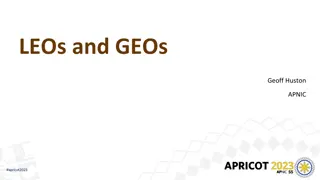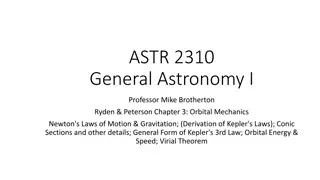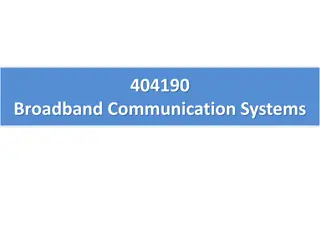
Sub-Orbital Testing Services Market
The global sub-orbital testing services market is estimated to reach $178.1 million in 2032 from $122.4 million in 2022, at a CAGR of 3.82% during the forecast period 2022-2032.nnRead Report Overview: //bisresearch.com/industry-report/sub-orbit
Download Presentation

Please find below an Image/Link to download the presentation.
The content on the website is provided AS IS for your information and personal use only. It may not be sold, licensed, or shared on other websites without obtaining consent from the author. If you encounter any issues during the download, it is possible that the publisher has removed the file from their server.
You are allowed to download the files provided on this website for personal or commercial use, subject to the condition that they are used lawfully. All files are the property of their respective owners.
The content on the website is provided AS IS for your information and personal use only. It may not be sold, licensed, or shared on other websites without obtaining consent from the author.
E N D
Presentation Transcript
Detailed Report Insights on Sub-Orbital Testing Services Market | Bis Research In the ever-evolving landscape of aerospace technology, the realm of sub-orbital testing services stands as a pivotal frontier. With ambitions reaching beyond the confines of Earth's atmosphere, the demand for sub-orbital testing services has surged in recent years, driven by the rapid advancements in space exploration, satellite deployment, and commercial space travel. This burgeoning market segment offers a glimpse into the future of space innovation and holds immense potential for both established aerospace companies and ambitious startups alike. The global sub-orbital testing services market is estimated to reach $178.1 million in 2032 from $122.4 million in 2022, at a CAGR of 3.82% during the forecast period 2022-2032. Sub-orbital testing involves conducting experiments and trials within the Earth's atmosphere, typically at altitudes ranging from 50 to 100 kilometers above the Earth's surface. While these flights do not achieve orbit around the Earth, they provide crucial data and insights for various applications, including scientific research, technology development, and payload testing. Market Segmentation: Segmentation 1: by Payload Capacity 1-50 Kg
51-200 Kg 201-500 Kg 501 Kg and Above Segmentation 2: by Application Human-Tended Automated Segmentation 3: by End User Government Commercial Defense Research Institutions Request A Detailed Sample on Sub-Orbital Testing Services Market! Sub-Orbital Testing Services Market Dynamics: The sub-orbital testing services market is witnessing significant growth propelled by several key factors: 1. Commercial Space Exploration: The rise of private space companies like SpaceX, Blue Origin, and Virgin Galactic has democratized access to space. These companies are not only focused on space tourism but also on offering sub-orbital testing services to research institutions, government agencies, and commercial entities. 2. Advancements in Aerospace Technology: Breakthroughs in propulsion systems, materials science, and miniaturization have made sub-orbital testing more accessible and cost-effective. This has attracted a diverse range of clients seeking to validate their technologies in a space-like environment without the complexity and expense of orbital missions. 3. Growing Demand for Satellite Deployment: With the proliferation of small satellites for communication, Earth observation, and scientific research, there is a growing need for reliable and efficient launch services. Sub-orbital testing provides an invaluable opportunity to test satellite components and systems in relevant environments before deployment. 4. Research and Development Initiatives: Government agencies, academic institutions, and private companies are increasingly investing in research and development projects that require access to space-like conditions. Sub-orbital testing services offer a cost-effective means of conducting experiments and gathering data for a wide range of scientific and technological endeavors. Challenges and Opportunities While the sub-orbital testing services market holds tremendous promise, it is not without its challenges. Key considerations include: 1. Safety and Reliability: Ensuring the safety and reliability of suborbital vehicles is paramount, particularly when carrying human passengers or valuable payloads. Companies must adhere to stringent regulatory standards and continuously improve their systems and processes to mitigate risks.
2. Cost and Accessibility: While sub-orbital testing is generally more affordable than orbital missions, it still requires a significant investment of resources. Making these services more accessible to a broader range of clients will be essential for sustaining market growth and innovation. 3. Regulatory Environment: Regulatory frameworks governing sub-orbital testing vary by jurisdiction and can pose challenges for companies operating in multiple countries. Harmonizing regulations and streamlining approval processes will be crucial for facilitating international collaboration and market expansion. 4. Competition and Differentiation: As the market becomes more crowded, companies must differentiate themselves by offering unique value propositions, whether through innovative technology, specialized expertise, or exceptional customer service. Despite these challenges, the sub-orbital testing services market presents abundant opportunities for innovation, collaboration, and exploration. As the pace of technological advancement accelerates and the boundaries of space are pushed ever further, the demand for sub-orbital testing services will continue to grow, driving progress and unlocking new possibilities beyond the horizon. Get Insights in Spacetech Market Research Reports Competitive Landscape The competitive landscape of the sub-orbital testing services market consists of several organic and inorganic strategies followed by the key players to increase their market share. The strategies include product innovations, contracts, partnerships, acquisitions, and business expansions, among others. Some of the key players in the sub-orbital testing services market include Blue Origin, Virgin Galactic, Near Space Corporation, Aerostar, Exos Aerospace Systems & Technologies, Inc., and UP Aerospace among otjers. These companies are aiming for a wide range of partnerships, collaborations, agreements, and contracts to expand their operations and increase their market presence globally to generate revenues and attract new customers Key Questions Answered in this Report: What are the trends in the sub-orbital testing services market, and how is the market expected to change over the forecast period 2022-2032? What are the key drivers and challenges faced by the sub-orbital testing platforms manufacturing companies that are currently working in the sub-orbital testing services market? How is the market expected to grow during the forecast period 2022-2032? What are the opportunities for the companies to expand their businesses in the sub-orbital testing services market? Which region is expected to be leading the sub-orbital testing services market by 2032? What are the key developmental strategies implemented by the key players to sustain in this highly competitive market? What is the current and future revenue scenario of the sub-orbital testing services market?






















